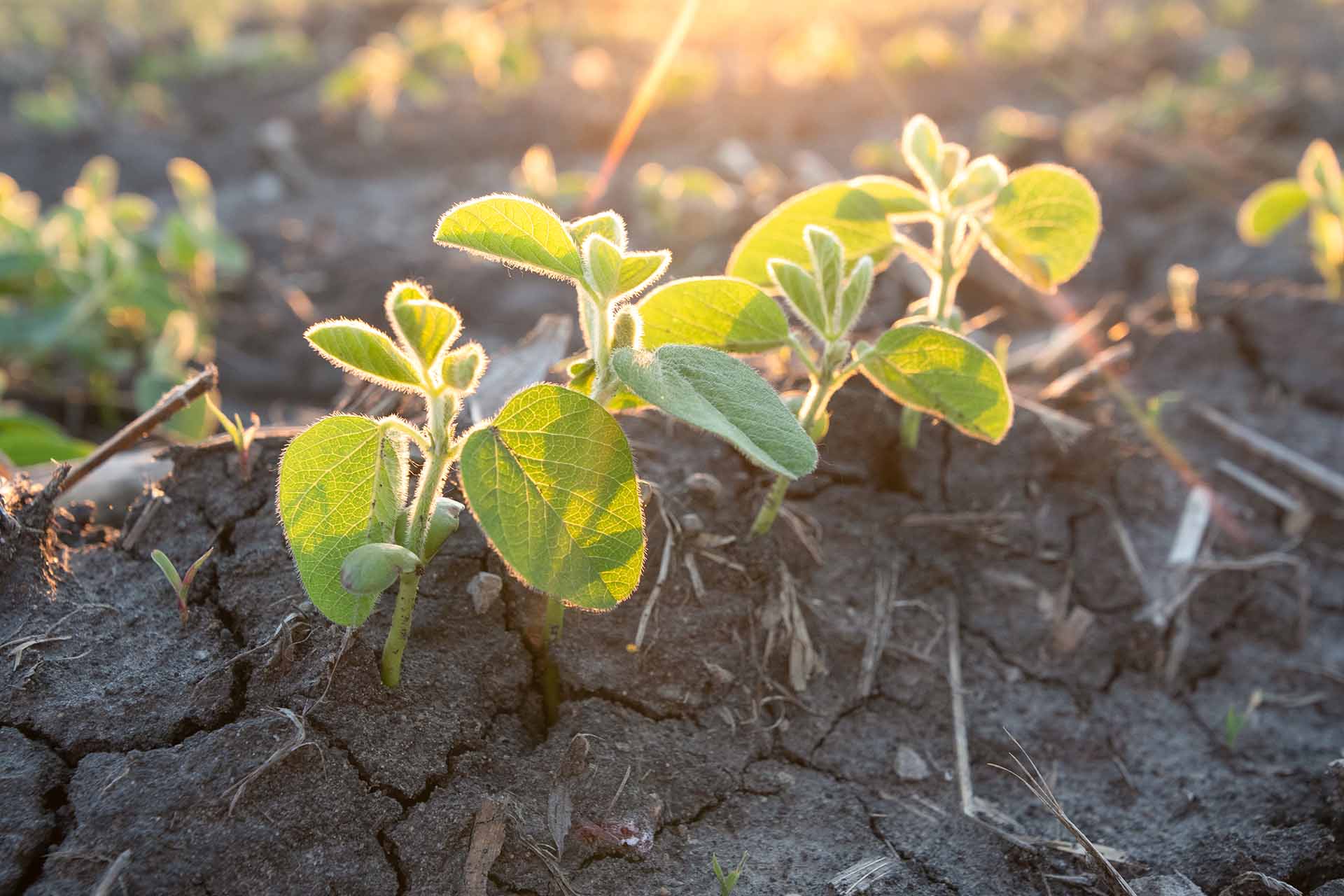
(Photo: Iowa Soybean Association / File Photo)
Walking Rows: ISA agronomist updates - June 6
June 6, 2024 | Kriss Nelson
Editor’s note: This report is part of a bi-monthly series featuring updates from the field from Iowa Soybean Association research agronomists.
Iowa Soybean Association research agronomists are reporting sporadic rainfall across the state over the past few weeks. This has kept some farmers out of the fields to finish planting while others could complete their post-emergence herbicide pass and side-dressing nitrogen. Now is the time to scout for early-season insects and diseases and assess weed pressure.
Drew Clemmensen - Northwest/Western Iowa
Soybean emergence looks good across my area in northwest Iowa, with most fields in the V1 to V3 stages. The early-planted corn is reaching the V4 to V6 stages and beginning its rapid nitrogen uptake.
Soybeans generally begin flowering around June 22. By this time, it is advisable to complete post-emergence spraying passes to reduce plant stress and ensure a successful pollination period.

Another important date to note is the June 12 cutoff date for spraying dicamba products.
Insects and diseases will remain a problem early in the growing season. It’s important to stay vigilant in scouting and to know the threshold levels for justifying treatments. Farmers should scout for insects first in no-till acres, field edges, grassy areas, or any areas where pests were found in previous years.
Shane Beck - Northeast/Northern Iowa
My region of north-central and northeast Iowa is finally seeing relief. Mother Nature is allowing some fields to dry, allowing farmers to return to the fields. Side-dressing corn and post-emergence herbicide applications have been top of mind for farmers.
This year, scouting and knowing what weeds are present is a very important practice. It is ideal to spray weeds before they grow taller than four to six inches. In this case, I recommend spraying full-label rates with proper adjuvants to achieve the best possible option for a successful weed kill.
It is also beneficial to scout fields the week following spraying to note any weed escapes and potentially make another pass with a different herbicide.

Some growers are deciding to replant whole or certain parts of their fields. Conducting stand counts in areas with thin plant stands will help you decide whether to replant.
Generally, if there are less than 80,000 plants per acre, it might be worth considering replanting or interseeding some more seeds between the existing rows.
Here are three steps to consider when evaluating plant stands.
Alex Schaffer - Central Iowa
The condition of the corn crop has improved significantly in the central part of the state. Standing water caused denitrification in certain areas, leading to yellowing of the corn. However, the corn is turning green with the onset of drier and warmer conditions. This may be because the corn is tapping into the nutrients from the fall-applied anhydrous.
If you are concerned about nitrogen availability in your soil, I recommend taking a Pre Side-dress Nitrate Test (PSNT) soil sample.

Last week allowed many farmers to begin their post-emergence herbicide applications and side-dressing in corn. It may not be too long before soybeans need to be sprayed. I encourage farmers to keep track of weed pressure and spray when the weeds are under a few inches in height, especially waterhemp, pigweed and marestail. Spraying when the weeds are taller, over four to six inches could affect the efficacy of your herbicides.
There have been some signs of herbicide injury in soybeans. I believe this happened when the seeds didn’t emerge in a timely manner and could not metabolize the herbicide as quickly. In most cases, the damage is nothing of real concern and only affects the cotyledon, which will be unnoticeable in a couple of weeks.
Lucas De Bruin - Southeast/Eastern Iowa
Most of the crops are planted in my area of southeast and east central Iowa. Once conditions improve, there will be a substantial amount of replanting of both corn and soybeans. Flooding has affected the river bottom ground in the southeast portion of the state. As of now, the rivers are back in their banks.
When considering replanting, be cautious with previous herbicide applications and perhaps consider changing hybrids and varieties.

If the corn in a certain area has been damaged by excess water and you’re thinking about replanting soybeans, be aware that if a lot of nitrogen has been applied to the soil, the soybeans may grow too tall and not produce many pods because they will absorb the extra nitrogen and prioritize growth over pod production.
In the drier areas of my region, post-emergence herbicide applications for corn and side-dressing have begun.
Mikaela Lawrence - Southwestern/Southern Iowa
Excessive rain is still causing planting delays in my region of southwest Iowa. With the wet conditions and farmers still working to complete their planting, it is not an ideal situation.
A grower reported encountering some thistle caterpillar pressure in early-planted soybeans. According to the Soybean Research Center and Information Network, although the Canada thistle is the pest’s preferred host, it can feed on soybeans. The caterpillar has a brown to black body, is one and one-fourth inches long, and has yellow striping on both sides. The branched, spiny hairs covering the body give the caterpillar a prickly appearance.

Start scouting for early-season insects. Additionally, it’s important to be aware of diseases that could cause issues with high moisture conditions and as humidity becomes more prevalent, such as frogeye leaf spot and white mold.
Back